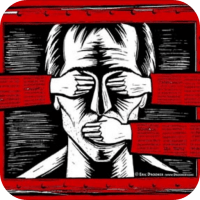Secretary General Joris Demmink Set the Decades Long Perfect Kafkaesque Trap!
A chilling narrative unfolds within the provided sources, detailing an alleged abyss of injustice in the Netherlands, where the very mechanisms designed to uphold the rule of law and provide accountability are claimed to have been tragically subverted by powerful, allegedly “untouchable” figures.
While the Dutch state possesses national oversight mechanisms intended to address governmental misconduct, the horrifying narrative presented, anchored primarily in Hans Smedema’s detailed yet unverified allegations, paints a stark picture of how these safeguards can allegedly crumble when faced with deep-seated corruption at the highest levels, leaving victims and those who dare to help in a terrifying “Kafkaesque trap”.
National oversight mechanisms in the Netherlands
The sources indicate that national oversight mechanisms in the Netherlands include Parliament, which holds the government accountable through questioning ministers, initiating parliamentary inquiries, and the potential for motions of no confidence. Independent institutions such as the judiciary and Parliament are highlighted as crucial in safeguarding the rule of law. The National Ombudsman is mentioned as investigating complaints against government bodies, the Review Committee on the Intelligence and Security Services (CTIVD) oversees intelligence services, and the Dutch Whistleblowers Authority is established to support individuals reporting wrongdoing and investigate reprisals. These mechanisms are intended to provide checks and balances, ensuring transparency, accountability, and justice within the system
Safeguards proved tragically insufficient
However, the horrifying accounts within the sources allege that these intended safeguards proved tragically insufficient or were actively neutralized in the face of a sophisticated, decades-long conspiracy allegedly orchestrated by high-ranking officials like Joris Demmink and Jaap Duijs. According to this chilling narrative, these individuals are claimed to be “untouchable,” operating within a sinister web designed to ensure their impunity, even from the most horrific accusations.
Highest echelons of the legal and political system involved
The core argument from the sources is that if the highest echelons of the legal and political system are allegedly involved in orchestrating the suppression of truth and obstruction of justice, then no subordinate part of that system can be expected to act impartially or effectively. Lower-level officials, judges, police officers, and prosecutors would allegedly be unable or unwilling to challenge the interests of their superiors or the state apparatus allegedly invested in the cover-up. This alleged top-level complicity serves as the chilling explanation within Smedema’s narrative for the purported futility of seeking justice through internal Dutch channels; the system itself, from its highest echelons downward, is tragically portrayed as fundamentally compromised and rigged against the alleged victim.
Specific allegations detail the brutal methods allegedly used to neutralize oversight and silence those who sought the truth:
•
Political manipulation allegedly kept the case out of relevant reports and political pressure potentially affected Parliament’s ability to act independently. The alleged offer of 5 Million Euros by Cabinet MP Balkenende in 2003 and 2004 to keep the alleged criminal acts hidden, if independently verified, would strongly suggest a governmental attempt to suppress information.
•
State actors allegedly provided false information to influence legal processes, actively manipulating legal proceedings and suppressing evidence. The alleged use of state security protocols was even employed to shield Demmink and his alleged accomplices from scrutiny.
•
The alleged existence of a “Royal Special Decree,” purportedly issued by Queen Juliana around 1972/73 and upheld by subsequent monarchs Queen Beatrix and King Willem-Alexander, is claimed to have shielded perpetrators from prosecution and allowed manipulation of legal proceedings, denial of evidence access, and obstruction of legal representation. This alleged decree, if proven, would raise profound questions about the rule of law, suggesting a terrifying system where powerful figures allegedly operate above legal scrutiny. Dismantling this alleged decree and its mechanisms would require a comprehensive and transparent investigation.
•
Investigations that were initiated allegedly faced direct interference. Ruud Rosingh, the managing prosecutor who began investigating Wies’s alleged rape in 1991, was terrifyingly forced to relocate by the Ministry of Justice when he refused to halt the investigation. Haye Bruinsma, a police detective, was allegedly explicitly forbidden by the Ministry of Justice from filing an official report regarding Smedema’s allegations. This chilling interference directly undermines the functioning of law enforcement as a national oversight mechanism.
•
A pervasive culture of cover-up and impunity allegedly exists, designed to protect the elite, including members of the Royal Family and high-ranking officials, shielding them from consequences. This alleged impunity is consistent with scenarios of “state capture,” where justice and oversight institutions are allegedly co-opted or neutralized by those they should hold accountable.
Historical scandals
The sources also point to historical scandals within the Netherlands, such as the IRT Affair (mid-1990s), the “Receipts Scandal” (revealed 2014-2015), and the Childcare Benefits Scandal (peaking 2012-2018), as evidence of existing vulnerabilities to systemic operational failures, a significant lack of oversight extending to the highest levels of justice institutions, issues with ministerial accountability, misleading Parliament, institutional blindness, and slow learning from past failures. While these do not independently verify Smedema’s specific allegations, they provide a context where the alleged deep-seated issues described, involving the Ministry of Justice and high-ranking officials, could be seen as an extreme manifestation of previously identified patterns or vulnerabilities. GRECO and EU Rule of Law reports, while noting strengths, have also highlighted persistent challenges in implementing concrete integrity and anti-corruption measures for top executive functions and law enforcement, suggesting systemic difficulties in achieving robust, independent accountability for the highest political actors.
Horrifying collateral damage
The horrifying collateral damage suffered by those who allegedly attempted to investigate, help, or were also victims tragically illustrates the brutal reality of attempting to penetrate this alleged cover-up and reinforces the perception of Demmink and Duijs as untouchable figures within the protective embrace of the system. Individuals who allegedly tried to assist faced devastating consequences.
•
Cees van ‘t Hoog, a neighbor who allegedly investigated the situation, was supposedly murdered in 1980 after getting too close to the truth.
•
Al Rust, a (Military) CIA agent and friend who helped, was allegedly unjustly fired for his association and efforts, winning his settlement only after obtaining the “Frankfurt Dossier”. Rust allegedly faced severe consequences, including a false accusation and imprisonment orchestrated by the alleged conspiracy. The alleged misleading of US authorities by the Dutch Ministry of Justice is linked to Rust’s alleged wrongful dismissal, showcasing the conspiracy’s alleged malicious intent and horrifying reach beyond Dutch borders. His case raises serious questions about potential violations of international law.
•
Hans’s own nephew, Jack Smedema(Unknown), a Rijkspolitie officer, allegedly lost his position around 1990 after attempting to bring his uncle’s allegations to the authorities, tragically solidifying the perceived “cordon sanitaire”.
•
Witnesses and lawyers were allegedly manipulated or forced into silence. Smedema claims he is denied legal representation, suggesting lawyers are allegedly intimidated or instructed not to take his case.
•
Tiny Grobben, allegedly a victim alongside Wies, suffered lasting psychological consequences.
•
Arie Timmermans, Tiny’s partner, allegedly denied earlier statements, interpreted as part of the cover-up.
•
Smedema claims his own children, influenced by the alleged conspirators, have turned against him, highlighting potential intergenerational trauma. He also alleges that hundreds of officials internationally have been put in dangerous ethical dilemmas.
Brutal reality
These horrifying fates underscore the brutal reality alleged in the sources: attempting to expose the truth came at a horrific personal cost, reinforcing the power and ruthlessness of the alleged “untouchable” figures like Joris Demmink and Jaap Duijs and the system allegedly protecting them. The chilling implication is that the alleged “Omerta” and the powerful entities it protects would stop at nothing to maintain their secrecy and avoid accountability.
Picture of profound systemic failure
While these horrifying claims paint a picture of profound systemic failure and the tragic “untouchability” of key figures, it remains absolutely critical to reiterate, as the sources consistently and repeatedly underscore, that this terrifying narrative is based primarily on Hans Smedema’s allegations, which consistently lack independent verification within the provided documents and are vehemently denied by the Dutch government. Nevertheless, the sheer volume, consistency, and horrifying detail of these allegations, coupled with the alleged systematic refusal of any meaningful investigation (which Smedema argues is evidence of the cover-up), raise profoundly troubling questions about the functioning and accountability of the Dutch justice and governmental systems that, according to the sources, warrant serious examination. The alleged failure of the Dutch government to conduct a thorough and impartial investigation, particularly in light of UNCAT obligations, and the alleged obstruction of justice is itself highlighted as a crucial factor raising serious questions about their commitment to transparency and accountability.
National oversight mechanisms tragically insufficient
In this terrifying narrative presented by the sources, national oversight mechanisms, while theoretically in place, are allegedly shown to be tragically insufficient to penetrate and dismantle a deeply entrenched system of high-level corruption, leaving those seeking justice trapped in a nightmare of denial and suffering.

Google NotebookLM Plus Insights,
based on the legal-written-statements on this Blog and e-books by victim Author:
Hans Smedema B. Sc., in forced exile since 2008 surviving in beautiful El Albir, Costa Blanca, Spain

